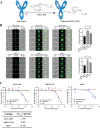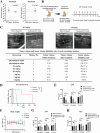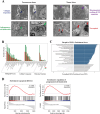An Anti-CD147 Antibody-Drug Conjugate Mehozumab-DM1 is Efficacious Against Hepatocellular Carcinoma in Cynomolgus Monkey
- PMID: 39985225
- PMCID: PMC12005782
- DOI: 10.1002/advs.202410438
An Anti-CD147 Antibody-Drug Conjugate Mehozumab-DM1 is Efficacious Against Hepatocellular Carcinoma in Cynomolgus Monkey
Abstract
Effective treatment strategies are urgently needed for hepatocellular carcinoma (HCC) patients due to frequent therapeutic resistance and recurrence. Antibody-drug conjugate (ADC) is a specific antibody-drug conjugated with small molecular compounds, which has potent killing activity against cancer cells. However, few ADC candidates for HCC are undergoing clinical evaluation. CD147 is a tumor-associated antigen that is highly expressed on the surface of tumor cells. Here CD147 is found significantly upregulated in tumor tissues of HCC. Mehozumab-DM1, a humanized anti-CD147 monoclonal antibody conjugated with Mertansine (DM1) is developed. Mehozumab-DM1 is effectively internalized by cancer cells and demonstrated potent antitumor efficacy in HCC cells. In vivo evaluation of Mehozumab-DM1 is conducted in a CRISPR-mediated PTEN and TP53 mutation cynomolgus monkey liver cancer model, which is poorly responsive to sorafenib treatment. Mehozumab-DM1 demonstrated potent tumor inhibitory efficacy at doses of 0.2 and 1.0 mg kg-1 treatment groups in cynomolgus monkey. No treatment-related adverse reactions or body weight loss are observed. Interestingly, Mehozumab-DM1 treatment induced RIPK-dependent tumor cell necroptosis through inhibiting IκB kinase/NF-κB pathway. In conclusion, Mehozumab-DM1 potently inhibits hepatoma through effective internalization to release payload and inducing cell necroptosis to enhance the bystander effect, which is a promising treatment for refractory HCC.
Keywords: antibody‐drug conjugate; cell necroptosis; hepatocellular carcinoma; therapeutic resistance.
© 2025 The Author(s). Advanced Science published by Wiley‐VCH GmbH.
Conflict of interest statement
The authors declare no conflict of interest
Figures





References
-
- Ducreux M., Abou‐Alfa G. K., Bekaii‐Saab T., Berlin J., Cervantes A., de Baere T., Eng C., Galle P., Gill S., Gruenberger T., Haustermans K., Lamarca A., Laurent‐Puig P., Llovet J. M., Lordick F., Macarulla T., Mukherji D., Muro K., Obermannova R., O'Connor J. M., O'Reilly E. M., Osterlund P., Philip P., Prager G., Ruiz‐Garcia E., Sangro B., Seufferlein T., Tabernero J., Verslype C., Wasan H., et al., ESMO Open 2023, 8, 101567. - PMC - PubMed
-
- Yang X., Yang C., Zhang S., Geng H., Zhu A. X., Bernards R., Qin W., Fan J., Wang C., Gao Q., Cancer Cell 2024, 42, 180. - PubMed
-
- Khongorzul P., Ling C. J., Khan F. U., Ihsan A. U., Zhang J., Mol. Cancer Res. 2020, 18, 3. - PubMed
MeSH terms
Substances
Grants and funding
LinkOut - more resources
Full Text Sources
Medical
Research Materials
Miscellaneous
